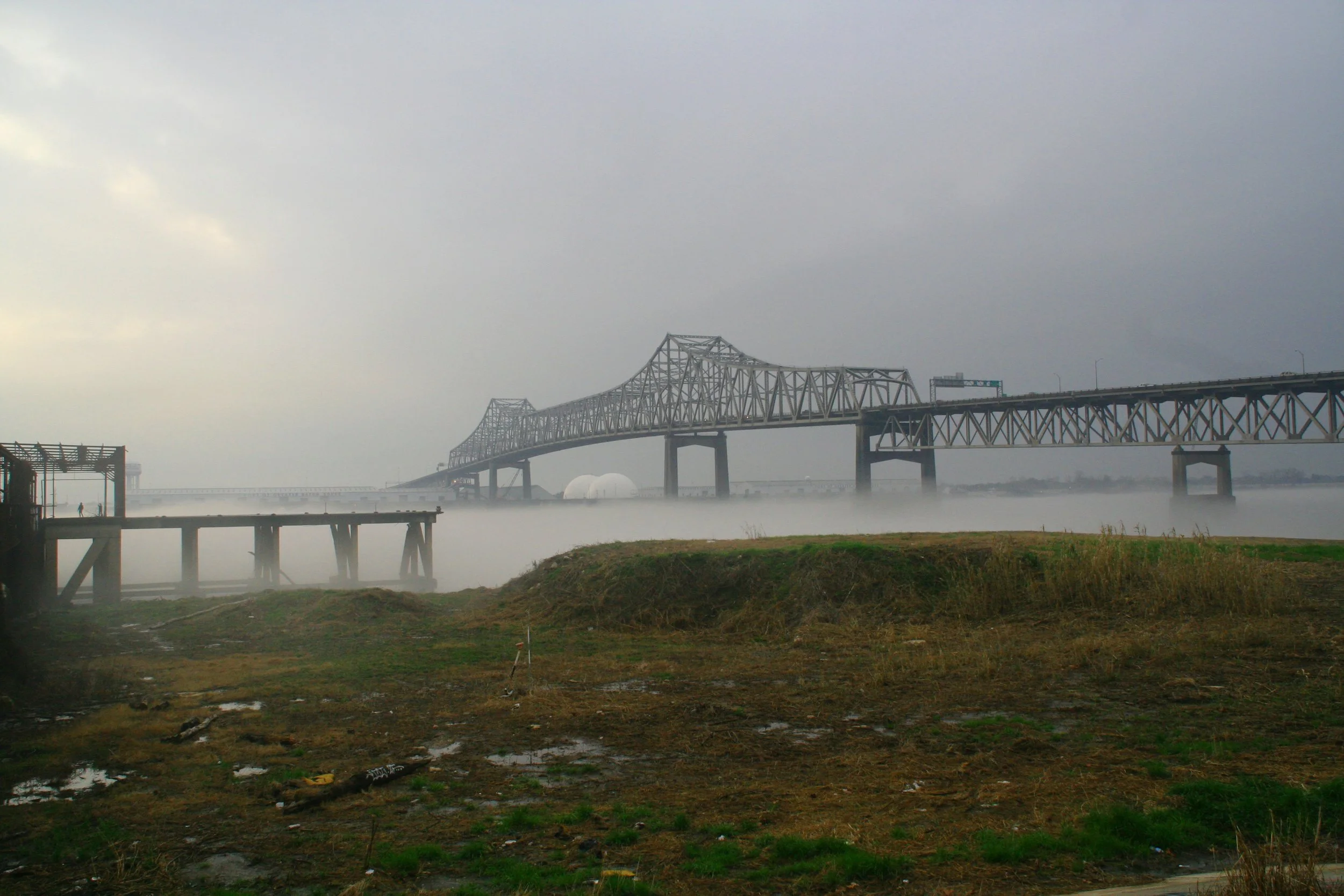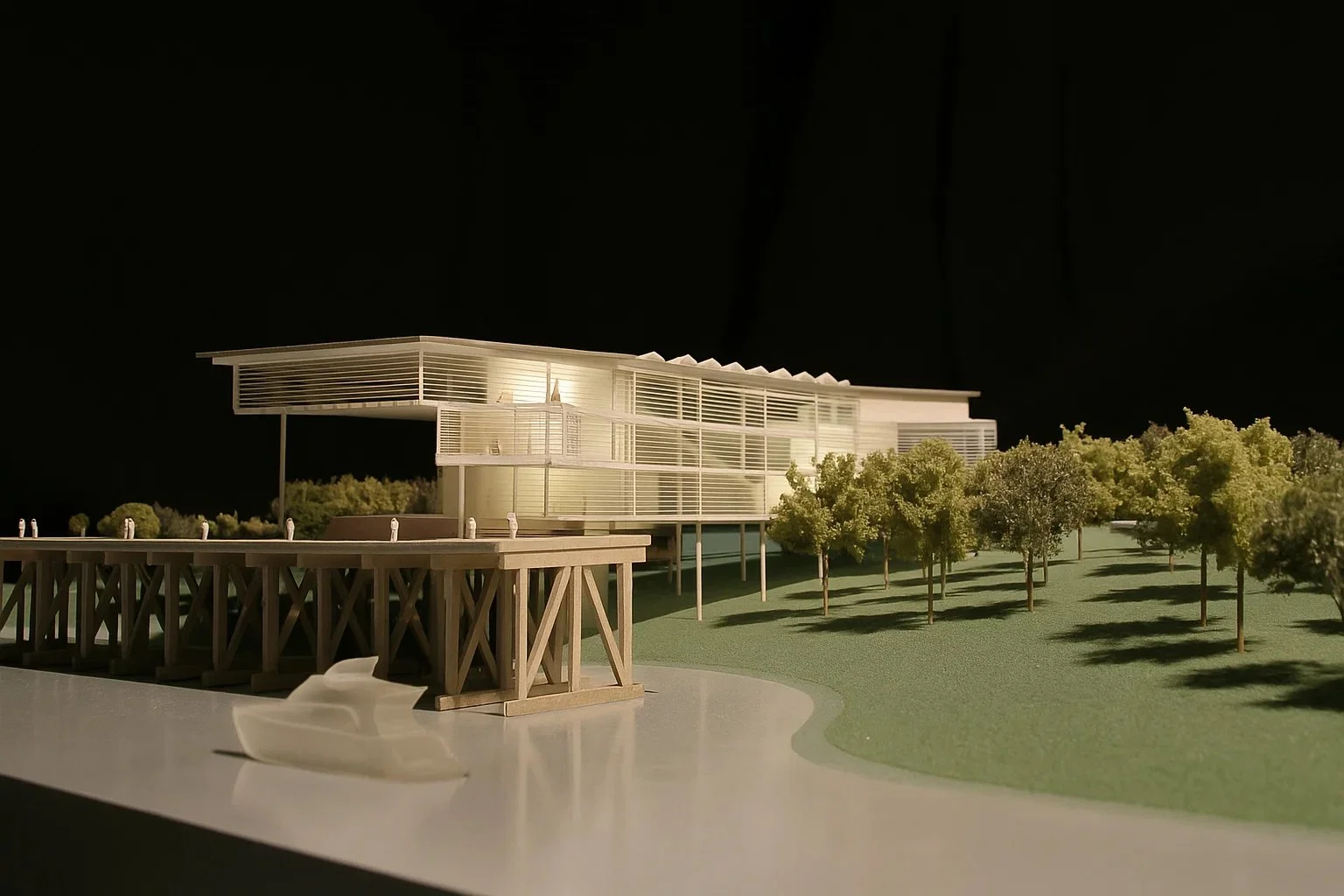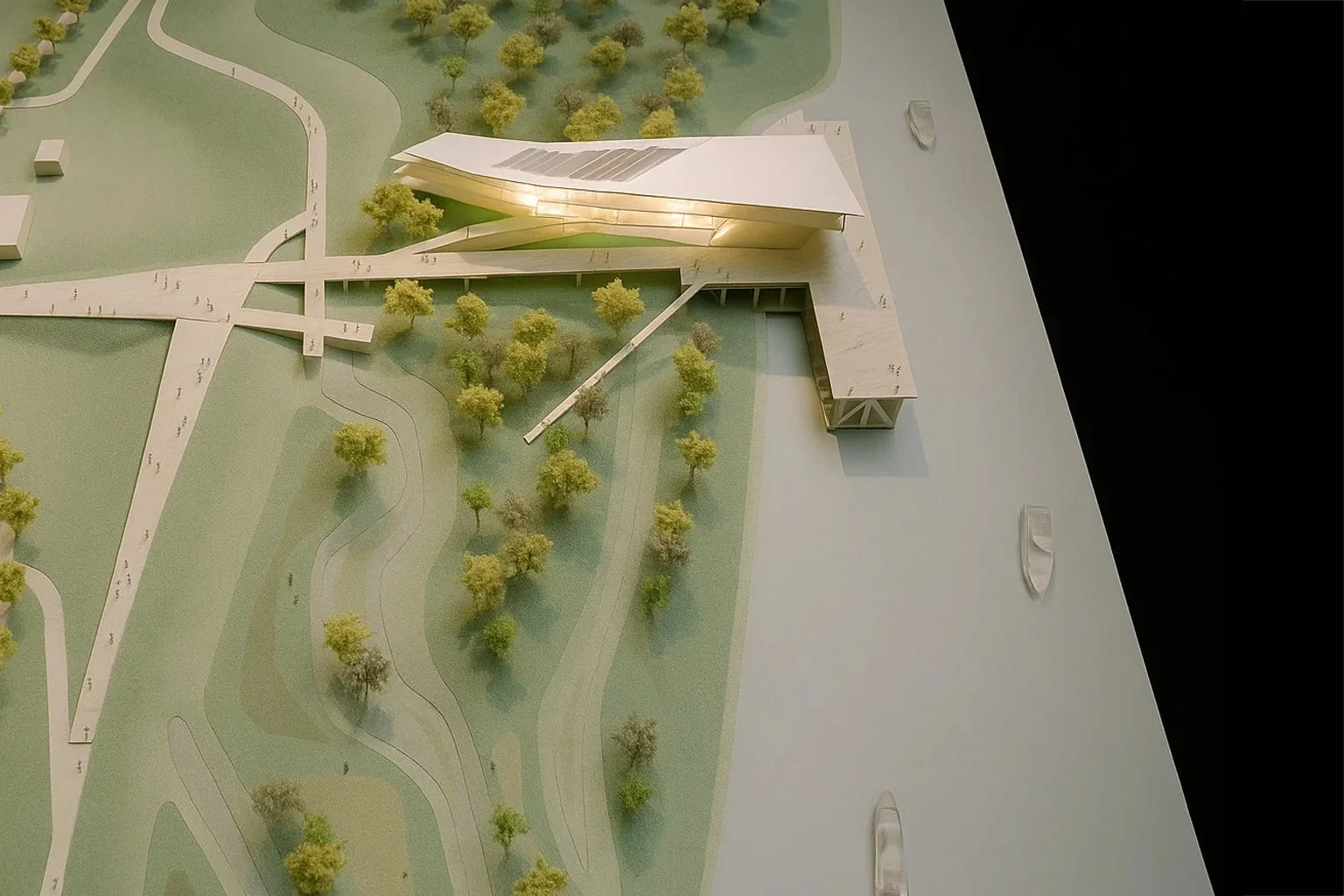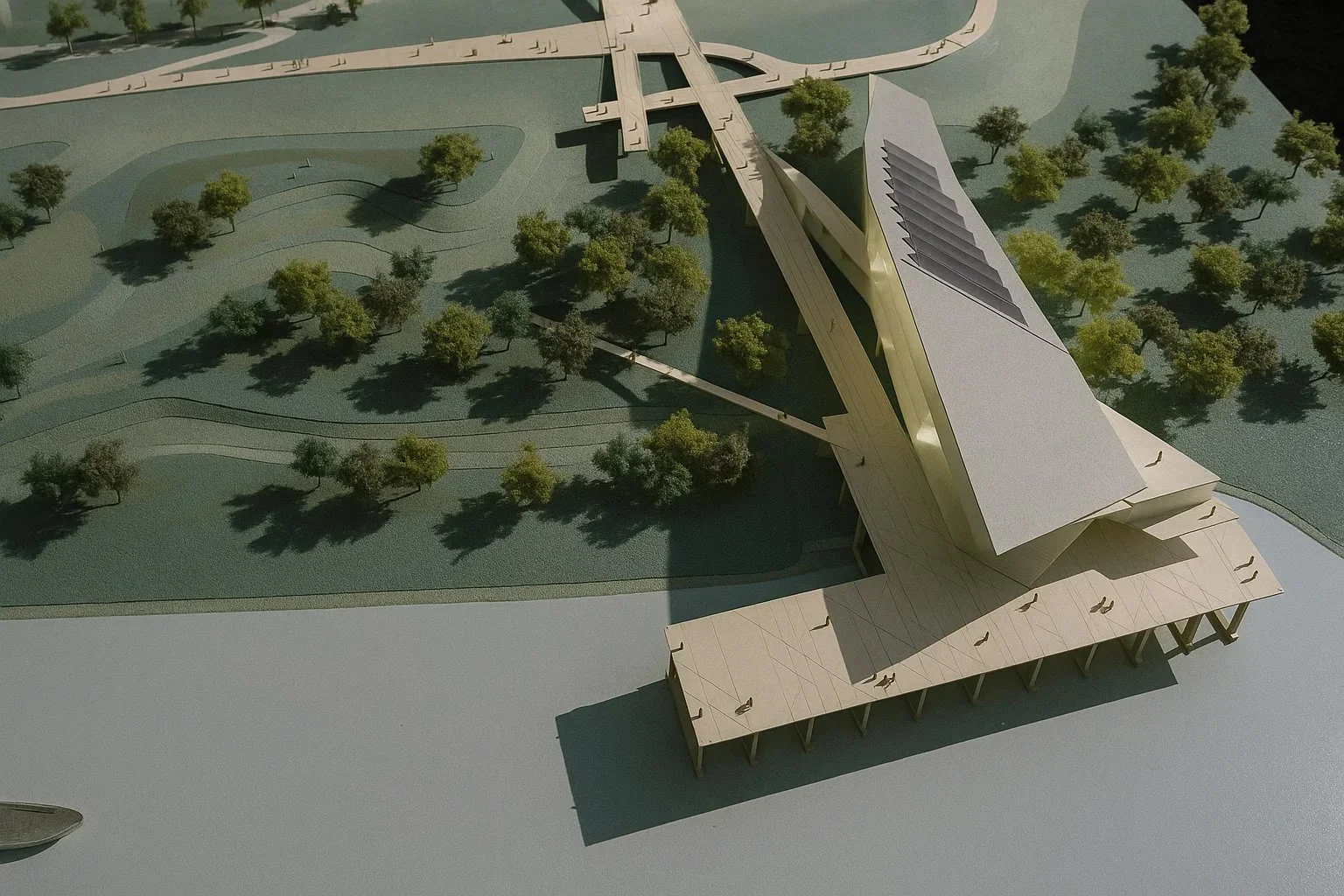
The Water Institute
Founded in 2011, the Water Institute of the Gulf is a nonprofit organization dedicated to advancing research on water systems, coastal restoration, and the resilience of communities living along the Gulf Coast. Its new headquarters is located directly on the banks of the Mississippi River in Baton Rouge, the capital of Louisiana, approximately 60 miles north of the Gulf of Mexico. The site is adjacent to a historic pier that once played a central role in river trade, connecting the project not only to the future of water research but also to the city’s layered past.
Project Size
35,000 sf
Location
Baton Rouge, LA
Lead Design
W/ VoorsangerMathes Llc
Architecture Inspired by Place
As the Institute embodies forward-looking aspirations, so too does its architecture. The building engages both city and river, linking Baton Rouge’s urban campus to the Mississippi’s powerful edge. Its form stretches outward toward the water, embracing the river’s dynamic presence while providing terraces, plazas, and interpretive venues for public engagement. The Institute is conceived as more than a workplace—it is a civic landmark, where science, education, and community converge.
The architectural language draws inspiration from the vessels, barges, bridges, and industrial structures that animate the riverfront. Its angular massing and robust structure evoke the resilience of working waterfronts, while its transparency and openness symbolize accessibility, collaboration, and innovation.
Program and Experience
Encompassing 35,000 square feet, the facility accommodates a diverse range of functions across three levels:
Ground Floor: Public exhibitions and interpretive displays that introduce visitors to the Mississippi River, coastal science, and the Institute’s mission.
Second Floor: Offices and laboratories that serve as the operational core of the Institute, providing spaces for researchers, scientists, and administrators.
Third Floor: An 8,000-square-foot (743-square-meter) conference center, designed to host regional, national, and international events on water, climate, and community resilience.
This mix of public and professional functions positions the Institute as both a hub for research and a destination for education and dialogue.
The design integrates advanced strategies for resilience and sustainability, acknowledging the precarious future of water systems in the Gulf Coast region. Shaped by the Estidama Building Guidelines and local environmental demands, the building incorporates structural, thermal, and environmental solutions to withstand the challenges of its riverine setting. In doing so, the Institute’s headquarters becomes not only a stage for research but also a living demonstration of sustainable design.
Recognition
The Water Institute headquarters was a finalist in an invited international competition. As lead designer with Voorsanger Mathes PC, Martin Stigsgaard was responsible for the concept and development of the design, which has since become a defining project within Louisiana’s civic and cultural landscape—marking a powerful new presence on the banks of the Mississippi River.













